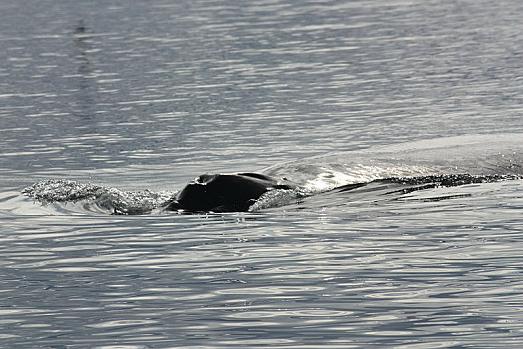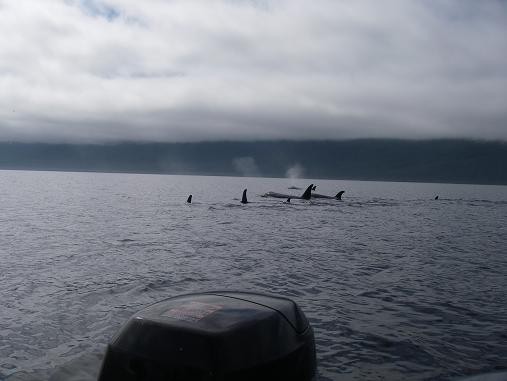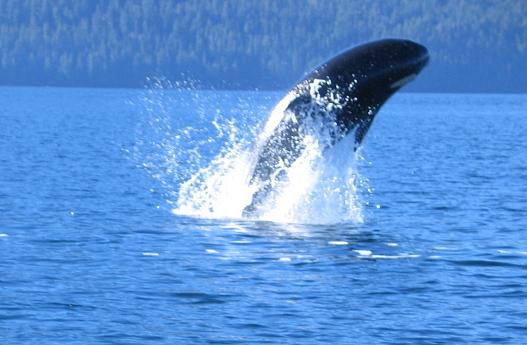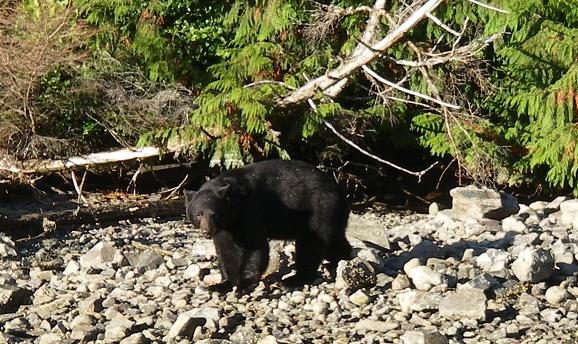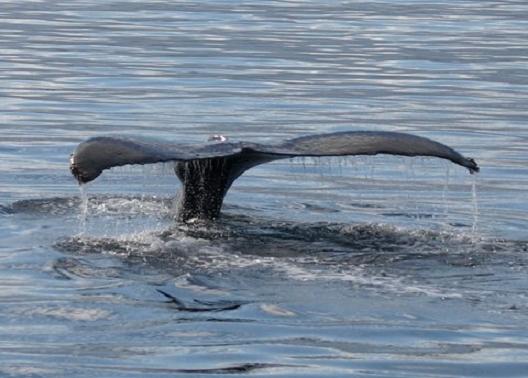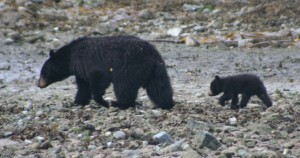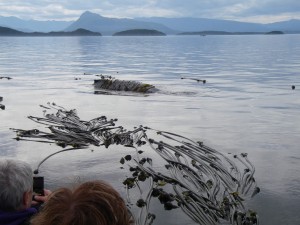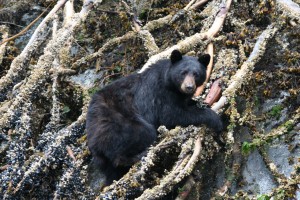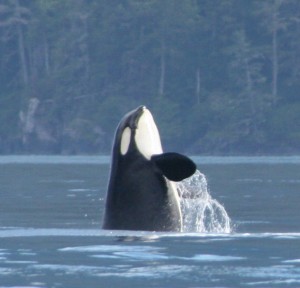
Wikipedia offers a good explanation of spyhopping: “When spyhopping, the whale rises and holds position partially out of the water, often exposing its entire rostrum and head, and is visually akin to a human treading water. Spyhopping is controlled and slow, and can last for minutes at a time if the whale is sufficiently inquisitive about whatever (or whomever) it is viewing.
Generally, the whale does not appear to swim to maintain its “elevated” position while spyhopping, instead relying on exceptional buoyancy control and positioning with pectoral fins. Typically the whale’s eyes will be slightly above or below the surface of the water, enabling it to see whatever is nearby on the surface.
Spyhopping often occurs during a “mugging” situation, where the focus of a whale’s attention is on a boat rather than on other nearby whales. Spyhopping among orcas may be to view prey species. For this a spyhop may be more useful than a breach, because the view is held steady for a longer period of time.”
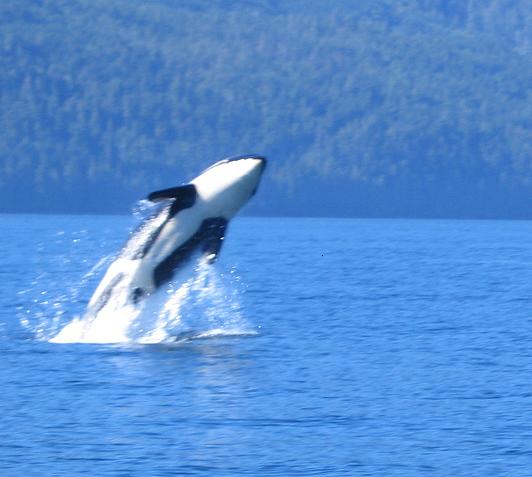 This photo shows that orcas exhibit dramatic coloring, with glossy black upper surfaces and brilliant white bellies. Appearing lighter from below and darker from above this allows the Orca to blend into the ocean environment and camouflage itself from prey. Even the top ocean predator need to be able to appear invisible while hunting.
This photo shows that orcas exhibit dramatic coloring, with glossy black upper surfaces and brilliant white bellies. Appearing lighter from below and darker from above this allows the Orca to blend into the ocean environment and camouflage itself from prey. Even the top ocean predator need to be able to appear invisible while hunting.